Born in Malvern on 16 May 1915, Donald Graeme Lumsden was the
son of a civil servant. After completing his secondary
education at Melbourne High School, he enrolled in the architecture
course at Melbourne Technical College (now RMIT) and transferred thence
to the University of Melbourne. From 1938 and 1940, Lumsden
studied at the university's Architectural Atelier; one of his student
projects, for an aircraft hangar for wartime bombers, was published in its annual journal.
During this period, he also completed his articles in the
office of A & K Henderson.
Lumsden is known to have undertaken private architectural work as early as September 1941, when he advertised for tenders for the erection of a brick veneer house in Dundas Street, Sale. That same year, he became registered during as an architect, by which time he was employed as a draftsman in the Department of the Interior, reportedlly engaged on projects for the US Army. Little else is known of his career during the 1940s. In 1945, he was one of a number of young up-and-coming architects to submit an entry in the Sun Post-War Home competition, sponsored by the daily newspaper. Although unplaced, Lumsden's entry was one of several selected for publication in the souvenir booklet. At some point, he entered into partnership wth semi-retired architect Arthur Purnell (1878-1964), who had been one of Melbourne's leading practitioners in the first third of the twentieth century. The resulting firm, styled as A W Purnell & Lumsden, proved short-lived and was dissolved in April 1948. Only one project has been identified to date: a factory in Launceston, for which tenders were called in June 1947.
By May 1948, Lumsden had already established his own private practice, operating from premises at 92 Toorak Road, South Yarra. In what may well have been a direct spin-off from his brief partnership with Arthur Purnell, one of Lumsden's first independant projects was another factory in Tasmania. This not only brought him a number of further commissions in the island state, but also helped establish him as a specialist in the design of industrial complexes. For the next three decades, factory architecture proved the mainstay of his output. During the 1950s alone, his office underook large-scale industrial projects for such leading manufacturers as Volkswagen Australia, Lewis Berger & Sons and Nicholas Pty Ltd (of Aspro fame). The last of these projects, which combined a vast production facility with a stylish curtain-walled office block in a landscaped setting, became a landmark at the corner of Waverley and Warrigal Roads in Chadstone, and garnered much publicity and press attention.
Notwithstanding its focus on large industrial projects, Lumsden's office undertook a few residential commissions in the 1950s, perhaps most notably a donut-shaped courtyard house at Dilston, north of Lanceston, for Edward Roy "Ted" Ashton (1927-2013), a member of Lumsden's staff who moved there in the early 1950s to supervise the rising tide of Tasmanian projects. Another key member of the office was William Millar "Bill" Hale (1924-2017), an ex-RAAF serviceman who graduated from the University of Melbourne in 1952 and then worked for Frederick Romberg and the State Savings Bank before joining Lumsden around 1955. Others known to have passed through the office over the years include Ivan Anderson, John Thompson, Philip Garside and Bolius Kunciunas.
For two decades from 1951, the office of D Graeme Lumsden was based in East Melbourne, in a converted terrace house at 100 Powlett Street. With staff numbers increasing as the practice expanded to include in-house engineers and other consultants, it relocated to St Kilda Road, later taking up space in a multi-storey office block in nearby Bowen Crescent that the firm had designed in 1972. A few years before, the name of the practice had been amended to Lumsden, Ashton & Hale, acknowledging the input of long-time employees Ted Ashton and Bill Hale. Towards the end of the 1970s, it became simply Lumsden & Ashton, following Hale's departure to establish his own practice. After Ted Ashton followed suit some time later, Lumsden closed the office and retired to the seaside town of Metung, in South Gippsland, where he designed and built a house for himself. He resided there until his death on 25 May 1995, barely a week after his eightieth birthday.
Lumsden is known to have undertaken private architectural work as early as September 1941, when he advertised for tenders for the erection of a brick veneer house in Dundas Street, Sale. That same year, he became registered during as an architect, by which time he was employed as a draftsman in the Department of the Interior, reportedlly engaged on projects for the US Army. Little else is known of his career during the 1940s. In 1945, he was one of a number of young up-and-coming architects to submit an entry in the Sun Post-War Home competition, sponsored by the daily newspaper. Although unplaced, Lumsden's entry was one of several selected for publication in the souvenir booklet. At some point, he entered into partnership wth semi-retired architect Arthur Purnell (1878-1964), who had been one of Melbourne's leading practitioners in the first third of the twentieth century. The resulting firm, styled as A W Purnell & Lumsden, proved short-lived and was dissolved in April 1948. Only one project has been identified to date: a factory in Launceston, for which tenders were called in June 1947.
By May 1948, Lumsden had already established his own private practice, operating from premises at 92 Toorak Road, South Yarra. In what may well have been a direct spin-off from his brief partnership with Arthur Purnell, one of Lumsden's first independant projects was another factory in Tasmania. This not only brought him a number of further commissions in the island state, but also helped establish him as a specialist in the design of industrial complexes. For the next three decades, factory architecture proved the mainstay of his output. During the 1950s alone, his office underook large-scale industrial projects for such leading manufacturers as Volkswagen Australia, Lewis Berger & Sons and Nicholas Pty Ltd (of Aspro fame). The last of these projects, which combined a vast production facility with a stylish curtain-walled office block in a landscaped setting, became a landmark at the corner of Waverley and Warrigal Roads in Chadstone, and garnered much publicity and press attention.
Notwithstanding its focus on large industrial projects, Lumsden's office undertook a few residential commissions in the 1950s, perhaps most notably a donut-shaped courtyard house at Dilston, north of Lanceston, for Edward Roy "Ted" Ashton (1927-2013), a member of Lumsden's staff who moved there in the early 1950s to supervise the rising tide of Tasmanian projects. Another key member of the office was William Millar "Bill" Hale (1924-2017), an ex-RAAF serviceman who graduated from the University of Melbourne in 1952 and then worked for Frederick Romberg and the State Savings Bank before joining Lumsden around 1955. Others known to have passed through the office over the years include Ivan Anderson, John Thompson, Philip Garside and Bolius Kunciunas.
For two decades from 1951, the office of D Graeme Lumsden was based in East Melbourne, in a converted terrace house at 100 Powlett Street. With staff numbers increasing as the practice expanded to include in-house engineers and other consultants, it relocated to St Kilda Road, later taking up space in a multi-storey office block in nearby Bowen Crescent that the firm had designed in 1972. A few years before, the name of the practice had been amended to Lumsden, Ashton & Hale, acknowledging the input of long-time employees Ted Ashton and Bill Hale. Towards the end of the 1970s, it became simply Lumsden & Ashton, following Hale's departure to establish his own practice. After Ted Ashton followed suit some time later, Lumsden closed the office and retired to the seaside town of Metung, in South Gippsland, where he designed and built a house for himself. He resided there until his death on 25 May 1995, barely a week after his eightieth birthday.
Select List of Projects
Purnell & Lumsden (c.1947-1948)
| 1947 | Factory for Replacement Part Pty Ltd, Mowbray, Tasmania |
D Graeme Lumsden (1949-1969)
| 1948 1949 1950 1951 1953 1955 1956 1958 1959 1960 1961 1962 1963 1965 1966 | Factory for Modern Transport & Metal Industries, Launceston, Tasmania Factory for CGC Manufacturing Company, Howard Street, Launceston, Tasmania Residence, Ringwood Residence, Balwyn Factory for James Nelson Ltd, Launceston, Tasmania Factory for Tootal Broadhurst Lee Company Ltd, Devenport, Tasmania Residence for G C McGrath, Dendy Street, Brighton [demolished] Factory for Valentine Publishing Company, Caulfield Factory for Lewis Berger & Sons, Charles & Dawson Streets, Coburg Residence for T Ashton, Dilston, Tasmania Residence for R Kettle, Balwyn Factory for Nicholas Pty Ltd, 699 Warrigal Road, Chadstone [demolished] Factory for Volkswagen (Australia) Pty Ltd, Clayton Factory for Patons Brake Replacements Pty Ltd, Coventry Street, South Melbourne Factory for Specialty Press Ltd, 611 Blackburn Road, Clayton North Factory for Leyland Motors Ltd, Footscray Renovation of office building (Penfold House), 116 Queen Street, Melbourne Factory for Murfett Publishers, Moorabbin Factory for Smith & Nephew, Wellington Road, Notting Hill Factory for Peters Ice Cream, corner Wellington and Springvale Roads, Clayton Office building (Royal Mail House), Swanston and Bourke Streets, Melbourne Bank branch for Bank of NSW, 77 Fitzroy Street, St Kilda Factory for Queen Bridge Motors Pty Ltd, Ballarat Road, Braybrook Additions to factory for John Crundall Knitting Mills Pty Ltd, Forster Road, Notting Hill Factory for Macmillan & Company Ltd, Moray Street, South Melbourne Additions to factory for Volkswagen (Australia) Pty Ltd, Clayton |
Lumsden, Ashton & Hale (1969-1979)
| 1969 1970 1971 1972 1977 | Factory for Bowater Paper Company, Toorak Road, Hawthorn Office building for Folkstone Developments, 33-33 Albert Road, Melbourne Factory for Brixton Estate, Brixton Road, Sandringham Factory for Preston Motors Pty Ltd, 355 Sydney Road, Coburg Office building for Equitable Life, 3 Bowen Crescent, Melbourne Mitchelton Winery for Ross & Peter Shelmerdine, Mitchellstown Road, Nagambie Additions to factory for Cummins Diesel Pty Ltd, Hume Highway, Campbellfield |
Lumsden & Ashton (from 1979)
| 1979 1980 1982 | Office building conversion for Northrock Nominees, South Melbourne Arboreal primate exhibit, Melbourne Zoological Gardens, Royal Park Rockman's Regency Hotel, corner Exhibition and Lonsdale Streets, Melbourne |
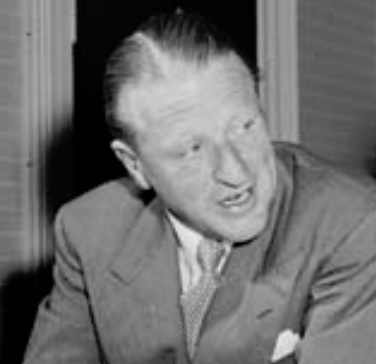 | |
| Donald Graeme Lumsden, architect |
 | |
| Entry in competition for Sun Post-War Home (1945) (source: Sun Post-War Homes; Reeves Collection) |
 | |
| Factory for James Nelson Ltd, Launceston (1949) (source: photograph by Simon Reeves, circa 1998) |
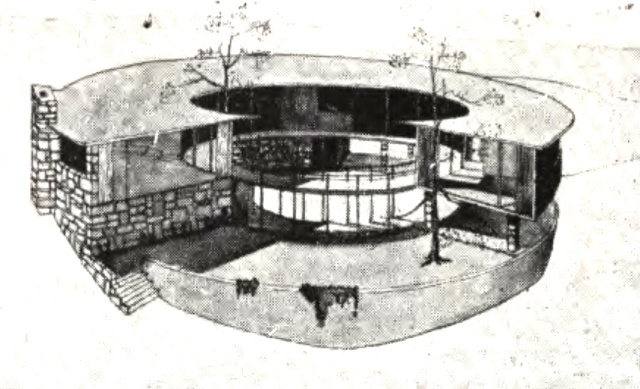 | |
| Residence for Ted Ashton, Dilston, Tasmania (1955) (source: Cross Section; Reeves Collection) |
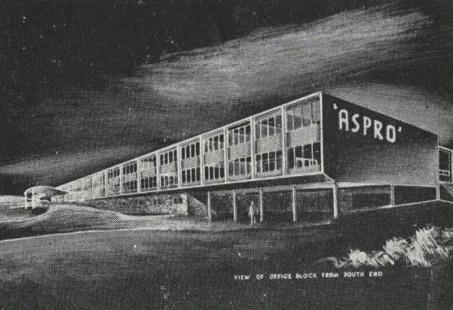 | |
| Early scheme for Nicholas factory, Chadstone (1956) (source: Cross Section; Reeves Collection) |
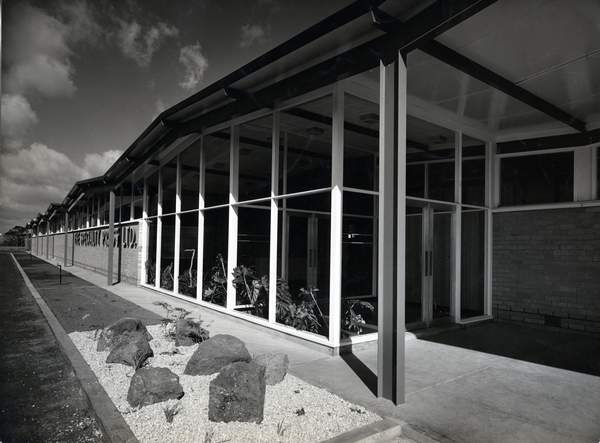 | |
| Factory for Specialty Press, Clayton North (1959) (source: Foundations; Reeves Collection) |
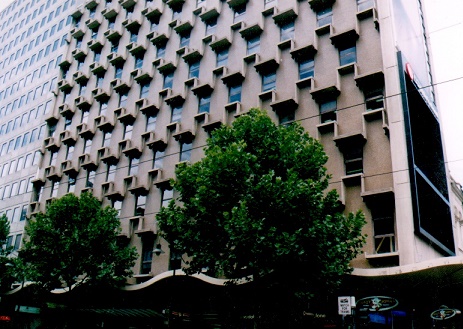 | |
| Royal Mail House, Swanston and Bourke Streets (1963) (source: photograph by Simon Reeves, circa 2005) |
top
